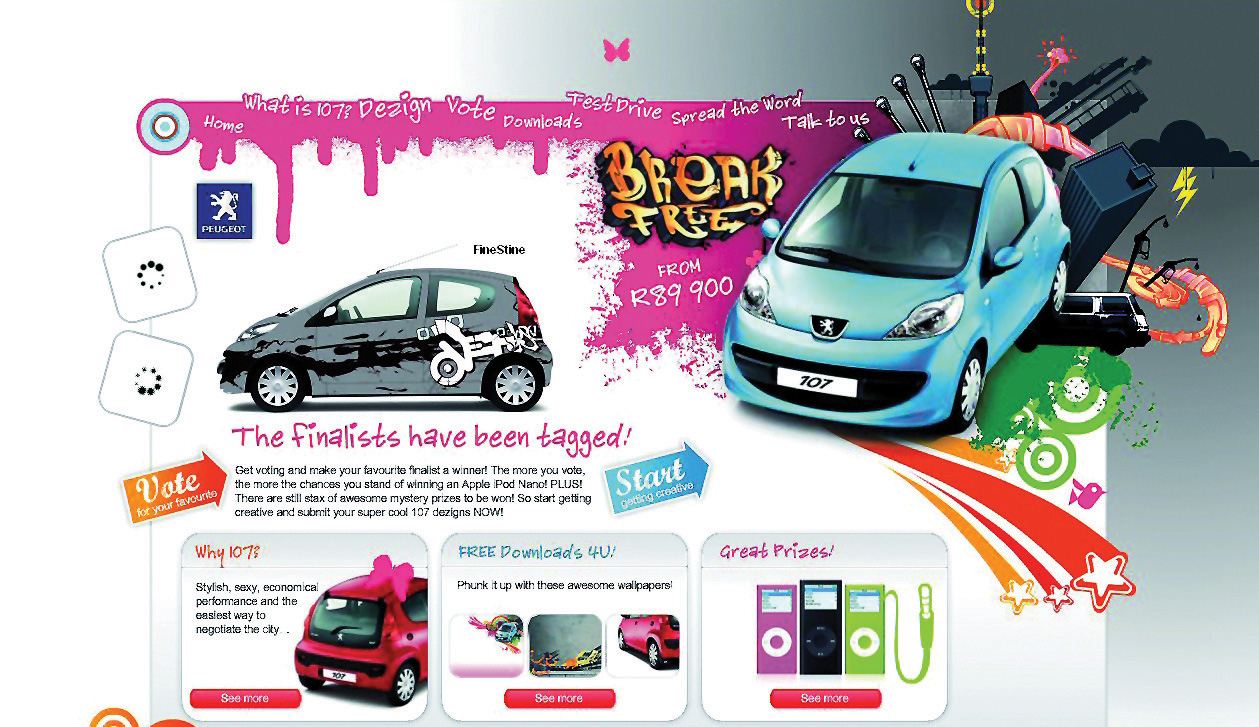South Africa’s mobile community grossly outweighs the number of people with access to the Internet, so it was up to Saatchi & Saatchi’s digital department, AtPlay, to find a way to bring the interactive Peugeot Break Free campaign to a Web and mobile market.
Figure 16.4 Web Site That Hosted the Peugeot 107 Break Free Campaign

Source: Used by permission from AtPlay.
The mobile chat network, MXit, has nine million users in the country and was the perfect portal to seed a comprehensive campaign—along with support across other social networks such as Facebook and MySpace. Competing with the Toyota Aygo and Citroen C1, which were launched around the same time, Peugeot’s 107 campaign reached out to the younger, style-conscious generation on MXit who may not be buying cars just yet but are influential with their car-purchasing parents.
The first step was to create a branded splash screen and Peugeot 107 profile. The 107 MXit profile fed information about the campaign from the Web site directly to the users—some content being hidden for the only the keenest eye to spot.
Templates of the car allowed the public to design their dream Peugeot 107, and it was up to the voters to pick the winner. The finalists were all sent t-shirts featuring a unique Semacode, or bar-coded URL (uniform resource locator) address, to give to their friends and family. Taking a photo of the encrypted image with a Semacode-enabled camera phone meant that the users could navigate directly to the voting page via their mobile device.
MXit background themes, or “skinz,” based on the finalists’ designs were also specially created, and seven thousand were downloaded within an hour.